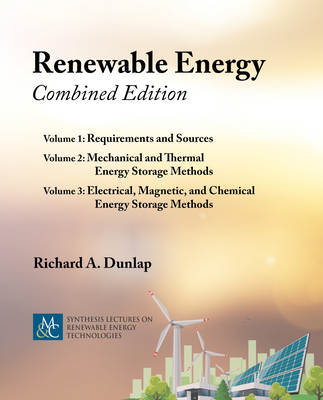Electric Vehicle Technology Explained
暫譯: 電動車技術解析
James Larminie, John Lowry
- 出版商: Wiley
- 出版日期: 2003-12-08
- 售價: $1,880
- 貴賓價: 9.8 折 $1,842
- 語言: 英文
- 頁數: 296
- 裝訂: Hardcover
- ISBN: 0470090693
- ISBN-13: 9780470851630
-
相關分類:
電機學 Electric-machinery
已過版
買這商品的人也買了...
-
 Fuel Cell Systems Explained, 2/e
Fuel Cell Systems Explained, 2/e$1,280$1,254 -
 C++ Primer, 3/e 中文版
C++ Primer, 3/e 中文版$980$774 -
 ARM Architecture Reference Manual, 2/e (Paperback)
ARM Architecture Reference Manual, 2/e (Paperback)$1,250$1,225 -
 $1,320Peer Reviews in Software: A Practical Guide (Paperback)
$1,320Peer Reviews in Software: A Practical Guide (Paperback) -
 $780CMMI: Guidelines for Process Integration and Product Improvement (Harcover)
$780CMMI: Guidelines for Process Integration and Product Improvement (Harcover) -
 系統程式 (System Software: An Introduction to Systems Programming, 3/e)
系統程式 (System Software: An Introduction to Systems Programming, 3/e)$600$588 -
 ASP.NET 程式設計徹底研究
ASP.NET 程式設計徹底研究$590$466 -
 $1,548Core Servlets and JavaServer Pages, Vol. 1: Core Technologies, 2/e
$1,548Core Servlets and JavaServer Pages, Vol. 1: Core Technologies, 2/e -
 How the Internet Works, 7/e
How the Internet Works, 7/e$1,290$1,226 -
 鳥哥的 Linux 私房菜-伺服器架設篇
鳥哥的 Linux 私房菜-伺服器架設篇$750$638 -
 鳥哥的 Linux 私房菜─基礎學習篇增訂版
鳥哥的 Linux 私房菜─基礎學習篇增訂版$560$476 -
 JSP 2.0 技術手冊
JSP 2.0 技術手冊$750$593 -
 Office 2003 入門與應用
Office 2003 入門與應用$480$379 -
 Foundations of Soft Case-Based Reasoning (Hardcover)
Foundations of Soft Case-Based Reasoning (Hardcover)$980$960 -
 ASP.NET 徹底研究進階技巧─高階技巧與控制項實作
ASP.NET 徹底研究進階技巧─高階技巧與控制項實作$650$507 -
 Head First Servlets & JSP:SCWCD 專業認證指南 (Head First Servlets & JSP)
Head First Servlets & JSP:SCWCD 專業認證指南 (Head First Servlets & JSP)$880$748 -
 打造個性化 XOOPS2 網站─佈景設計、模組開發
打造個性化 XOOPS2 網站─佈景設計、模組開發$580$493 -
 Windows XP 與電腦入門
Windows XP 與電腦入門$450$356 -
 快快樂樂學 PowerPoint 2003
快快樂樂學 PowerPoint 2003$390$308 -
 Excel 2003 特訓教材
Excel 2003 特訓教材$550$275 -
 紅色風暴 II 3ds max 室內設計實例教程-渲染篇
紅色風暴 II 3ds max 室內設計實例教程-渲染篇$790$624 -
 3ds Max 8 入門與實例
3ds Max 8 入門與實例$650$553 -
 SQL Server 2005 資料庫開發聖經
SQL Server 2005 資料庫開發聖經$890$757 -
 ASP.NET 2.0 深度剖析範例集
ASP.NET 2.0 深度剖析範例集$650$507 -
 聖殿祭司的 ASP.NET 2.0 專家技術手冊─使用 C#
聖殿祭司的 ASP.NET 2.0 專家技術手冊─使用 C#$720$569
商品描述
Electric Vehicle Technology Explained:
- Encompasses a full range of electric vehicles: bicycles, mobility aids, delivery vehicles and buses – not just cars.
- Covers all the basic technology relating to electric road vehicles – batteries, super capacitors, flywheels, fuel cells, electric motors and their controllers, and system design.
- Considers the environmental benefits and disadvantages of electric vehicles and their component devices.
- Includes case studies of a range of batteries, hybrids and fuel cell powered vehicles, from bicycles to buses.
- Offers many MATLAB examples explaining the design of appropriate computer prediction models.
Professionals, researchers and engineers in the electric vehicle industry as well as advanced students in electrical and mechanical engineering will benefit from this comprehensive coverage of electric vehicle technology.
Table of Contents
Acknowledgments.
Abbreviations.
Symbols.
1. Introduction.
A brief history.
Developments towards the end of the 20th century.
Types of Electric Vehicle in use Today.
Electric Vehicles for the Future.
2. Batteries.
Introduction.
Battery Parameters.
Lead Acid Batteries.
Nickel-Based Batteries.
Sodium Based Batteries.
Lithium Batteries.
Metal Air Batteries.
Battery Charging .
The Designer’s Choice of Battery.
Use of Batteries in Hybrid Vehicles.
Battery Modeling.
In Conclusion
3. Alternative and Novel Energy Sources and Stores.
Introduction.
Solar Photovoltaics.
Wind Power.
Flywheels.
Super Capacitors.
Supply Rails.
4. Fuel Cells.
Fuel Cells, a Real Option?
Hydrogen Fuel Cells – Basic Principles.
Fuel Cell Thermodynamics – An Introd.uction.
Connecting Cells in Series – the Bipolar Plate.
Water Management in the PEM Fuel Cell.
Thermal Management of the PEM Fuel Cell.
A Complete Fuel Cell System.
5. Hydrogen Supply.
Introduction.
Fuel Reforming.
Hydrogen Storage I: Storage as Hydrogen.
Hydrogen Storage II: Chemical Methods.
6. Electric Machines and their Controllers.
The ‘Brushed’ DC Electric Motor.
DC Regulation and Voltage Conversion.
Brushless Electric Motors.
Motor Cooling, Efficiency, Size and Mass.
Electrical Machines for Hybrid Vehicles.
7. Electric Vehicle Modeling.
Introduction.
Tractive Effort.
Modeling Vehicle Acceleration.
Modeling Electric Vehicle Range.
Simulations – a Summary.
8. Design Considerations.
Introduction.
Aerodynamic Considerations.
Consideration of rolling resistance.
Transmission efficiency.
Consideration of vehicle mass.
Electric Vehicle Chassis and Body Design.
General Issues in Design.
9. Design of Ancillary Systems.
Introduction.
Heating and Cooling Systems.
Design of the Controls.
Power Steering.
Choice of Tyres.
Wing Mirrors, Aerials and Luggage Racks.
Electric Vehicles Recharging and Refuelling Systems.
10. Electric Vehicles and the Environment.
Introduction.
Vehicle Pollution: the Effect.
Vehicle Pollution: A Quantitative Analysis.
Vehicle Pollution in Context.
Alternative and Sustainable Energy via the Grid.
Using Sustainable Energy with Fueled Vehicles.
The Role of Regulations and Law Makers.
11. Case Studies.
Introduction.
Recharging Battery Vehicles.
Hybrid Vehicles.
Fuel Cell Powered Bus.
Conclusion.
Appendix: MATLABExamples.
Index.
商品描述(中文翻譯)
雖然傳統的電池電動車在汽車市場上仍然影響有限,但其他類型的電動車,特別是混合動力車,已經取得了顯著且有前景的進展。此外,小型電池電動車,如自行車和輔助移動工具,也在良好發展中。本書展示了超過160幅圖表和圖片,解釋了這些重要發展背後的科學和技術,並介紹了支撐電動車設計和性能建模的相關問題。
《電動車技術解析》:
- 涵蓋全範圍的電動車:自行車、輔助移動工具、配送車輛和巴士——不僅僅是汽車。
- 涵蓋所有與電動道路車輛相關的基本技術——電池、超級電容器、飛輪、燃料電池、電動馬達及其控制器,以及系統設計。
- 考慮電動車及其組件設備的環境優勢和劣勢。
- 包含多種電池、混合動力和燃料電池驅動車輛的案例研究,從自行車到巴士。
- 提供許多 MATLAB 範例,解釋適當的計算機預測模型設計。
電動車行業的專業人士、研究人員和工程師,以及電氣和機械工程的高級學生,將從這本全面涵蓋電動車技術的書籍中受益。
目錄
- 致謝
- 縮寫
- 符號
1. 介紹
- 簡史
- 20世紀末的發展
- 當前使用的電動車類型
- 未來的電動車
2. 電池
- 介紹
- 電池參數
- 鉛酸電池
- 鎳基電池
- 鈉基電池
- 鋰電池
- 金屬空氣電池
- 電池充電
- 設計者的電池選擇
- 混合動力車輛中的電池使用
- 電池建模
- 總結
3. 替代和新型能源來源及儲存
- 介紹
- 太陽能光伏
- 風能
- 飛輪
- 超級電容器
- 供應軌道
4. 燃料電池
- 燃料電池,真的是一個選擇嗎?
- 氫燃料電池——基本原理
- 燃料電池熱力學——簡介
- 串聯連接電池——雙極板
- PEM 燃料電池中的水管理
- PEM 燃料電池的熱管理
- 完整的燃料電池系統
5. 氫供應
- 介紹
- 燃料重整
- 氫儲存 I:作為氫的儲存
- 氫儲存 II:化學方法
6. 電動機及其控制器
- “有刷”直流電動機
- 直流調節和電壓轉換
- 無刷電動機
- 馬達冷卻、效率、尺寸和質量
- 混合動力車輛的電氣機械
7. 電動車建模
- 介紹
- 牽引力
- 車輛加速建模
- 電動車範圍建模
- 模擬——總結
8. 設計考量
- 介紹
- 空氣動力學考量
- 滾動阻力考量
- 傳動效率
- 車輛質量考量
- 電動車底盤和車身設計
- 設計中的一般問題
9. 附屬系統的設計
- 介紹
- 加熱和冷卻系統
- 控制設計
- 動力轉向
- 輪胎選擇
- 側視鏡、天線和行李架
- 電動車的充電和加油系統
10. 電動車與環境
- 介紹
- 車輛污染:影響
- 車輛污染:定量分析
- 車輛污染的背景
- 通過電網的替代和可持續能源
- 與燃料車輛一起使用可持續能源
- 法規和立法者的角色
11. 案例研究
- 介紹
- 充電電池車輛
- 混合動力車輛
- 燃料電池驅動巴士
- 總結
- 附錄:MATLAB 範例
- 索引






























